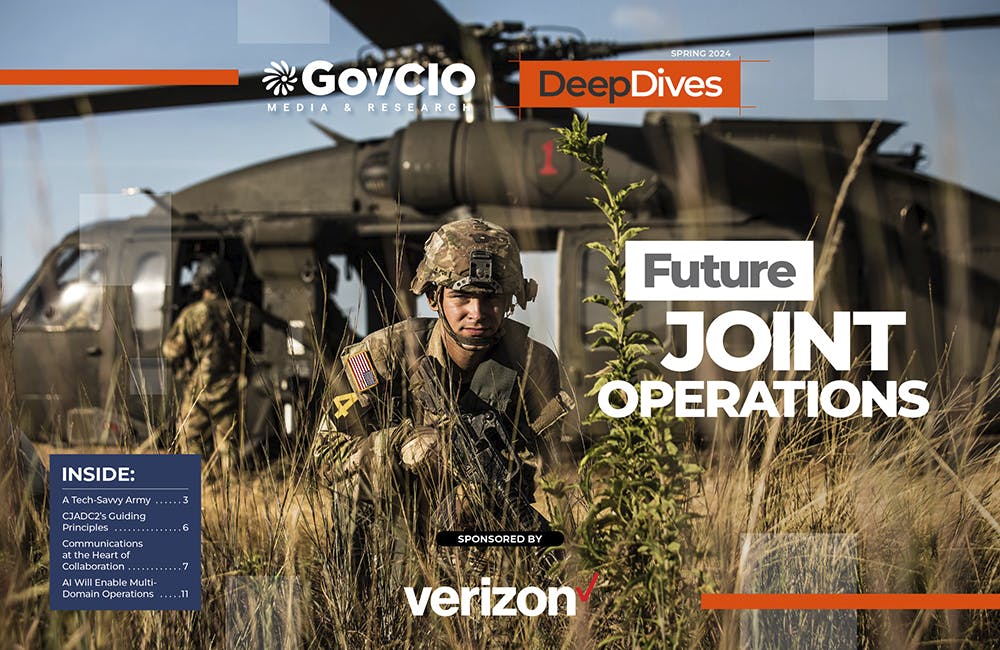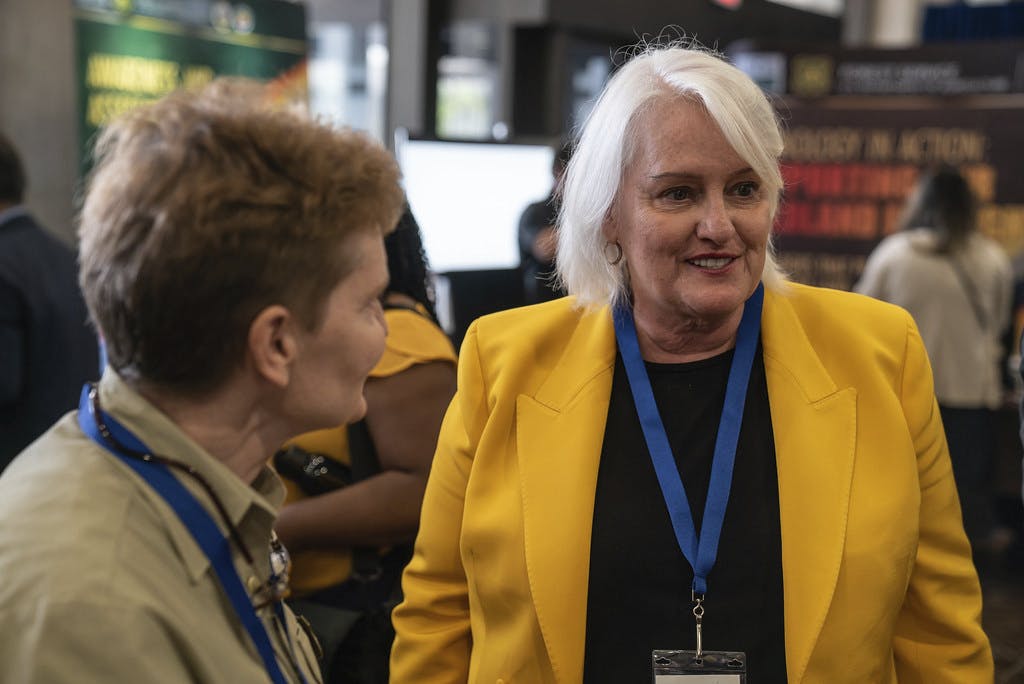End User in Focus for Evolving Digital Services at VA
Increasing focus on the end user is evolving how the agency thinks about digital services.

The Department of Veterans Affairs has been progressing on existing and new digital initiatives driven by human-centered design, and the leaders of those projects say their work has transformed veterans’ experiences and interactions with the agency.
Veterans are increasingly seeking to take control of their health care and interact with their providers digitally, said Acting Chief Technology Officer Charles Worthington and VA.gov Health Product & Design Lead Lauren Alexanderson at GovernmentCIO Media & Research’s Nov. 7 Veterans Digital Transformation Breakfast.
“We’re expanding rapidly the way that we’re delivering care in digital ways, and it’s a lot about self-service,” Alexanderson said. “How do we enable veterans to do as much of the health care, which is scheduling an appointment online or messaging your doctor to get a chat with a doctor to triage your problem before necessarily having to go into an appointment?”
The VA has focused its digitalization of veterans services by emphasizing human-centered design, Worthington and Alexanderson said. In doing so, the VA has seen a notable uptick in VA.gov user interactions and telehealth encounters.
More specifically, since VA.gov relaunched last November, it has seen 20.9 million unique users and 13.6 million unique login successes, Worthington said. Among those interactions, there has been increased activity. VA.gov has seen 684,000 profile updates — a 479% increase from the previous year — as well as 6,500 burial submissions and 8,000 pension submissions, which have increased 91 and 59%, respectively.
VA.gov has also seen 291,000 disability compensation submissions this past year, a 27% increase from the previous year, and 598,000 education form submissions, a 2% increase from 2018 numbers.
These numbers are largely due to the VA’s growing emphasis on human-centered design in its digital solutions.
“One of the changes I’m excited about is a change within the VA — and that is the idea of really making human-centered design part of every single IT contract, out of every single product and project,” Alexanderson said, adding that continuous engagement with veterans to see what’s right for them is important to that process.
Along the lines of human-centered design, Worthington noted the successes the VA has seen in its telehealth services. He said that last year, the VA had 2.3 million telehealth encounters with nearly 1 million individual patients, “one of the biggest numbers you’ll hear of any health care provider.”
Telehealth services at the VA will only continue to grow with new projects the agency is working on, such as Project Atlas.
“Project Atlas … is basically repurposing places where veterans are already visiting, things like a Veterans of Foreign Wars (VFW) post or a Walmart, places that are in their community,” Worthington said. “We’ve retrofitted with this sort of personal clinical experience where a veteran can arrive and have a health care appointment in a setting that sort of feels like a doctor’s office, but there’s no VA staff present except the clinician on the other line of the telehealth screen.”
The VA will see increased demands for telehealth services as 5G telecommunications continue to expand, since 5G will enable faster and greater internet connectivity, Worthington said.
Amid the successes VA has seen in its digital growth, Andrew Fichter, product owner of the VA’s Lighthouse Application Programming Interface (API) platform, said he is also taking a human-centered design approach to improving the department’s APIs and further streamlining processing and intake of veterans claims digitally.
The VA currently processes over 50% of veterans claims on paper or via fax, Worthington said. As veterans services organizations use software to digitize that paperwork and send it to the VA, Fichter has prioritized speaking to VSOs to see how his team can build on VA APIs in a way that continues to improve both VSO and veteran experiences in claims processes.
“One interview subject said that … you want to make sure they’re getting quick service, and the more time you’re spending standing at a fax machine and printing out paper and filing it, the less you’re actually helping the veterans,” Fichter said.
As the VA continues developing APIs to increase claims digitization, Fichter said that he is currently tackling an API project to remove the claims processing period between VSO digital submissions and claims’ entrance to the Veterans Benefits Management System. This summer, his team launched a claims establishment API to automatically establish disability compensation claims digitally. Fichter is working with industry partners to integrate the API.
VA leadership is driving the department to continue producing the best solutions it can for veterans, Worthington said.
“Our goal is to create a world-class digital experience that’s on par with anything a veteran would receive interacting with a private-sector service provider… In a lot of ways, we’ve made a ton of progress,” Worthington said. “The VA, in many ways, already leads the industry in terms of health care — in digital experience, so we want to maintain that leadership position.”
This is a carousel with manually rotating slides. Use Next and Previous buttons to navigate or jump to a slide with the slide dots
-

Cyber Incident Reporting Regulation Takes Shape
An upcoming CISA rule aims to harmonize cyber incident reporting requirements for critical infrastructure entities.
5m read -

Connectivity Drives Future of Defense
The Defense Department is strategizing new operating concepts ahead of future joint force operations.
8m read -

5 Predictions for AI in Government Technology
Agencies are setting plans in motion not only to integrate AI into their enterprises, but also ensuring the data that power these systems are fair.
41m watch -

Agencies Meet Key AI Goals Amid Call for More Experimentation
Federal leaders call for prioritizing artificial intelligence and its applications to critical cybersecurity and workforce initiatives.
7m read








